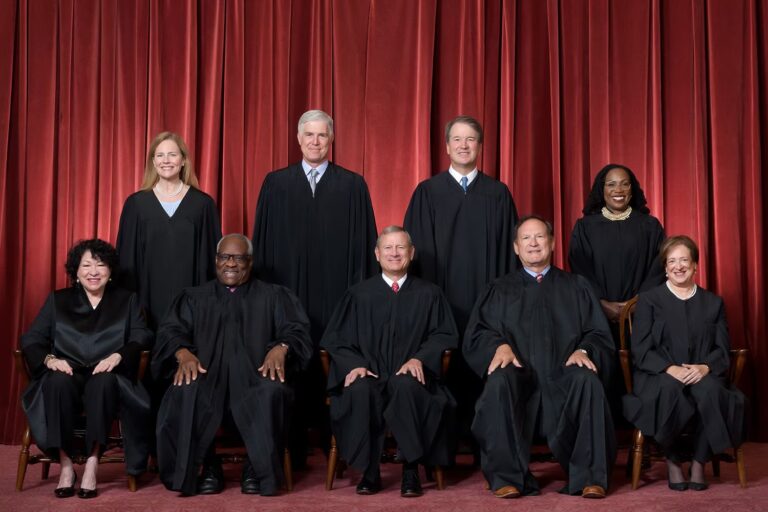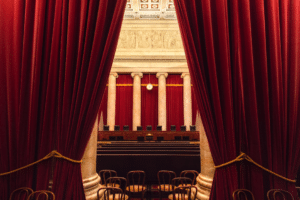National Review: The Supreme Court Isn’t as Divided as You Think

‘Samuel Alito’s Assault on Wetlands Is So Indefensible That He Lost Brett Kavanaugh” reads one headline about a recent Supreme Court decision. A casual reader might come away with the impression that the Court had just issued a deeply divided ruling. But, in fact, the Court had unanimously sided with the petitioners; the justices had disagreed about the proper standard at issue in the case, but unanimously agreed that the government’s actions were wrong.
The media love to play up dissent at the Court, especially if it can be depicted as stemming from a partisan or right–left ideological divide. As a longtime SCOTUS watcher, I’m a fan of dissenting opinions. I enjoy the drama, the disagreements, the sometimes not-so-subtle digs, and the foreshadowing of future litigation. But even I — the co-host of a podcast dedicated to celebrating dissents — have to admit that the Supreme Court is not as divided as many in the media would have you think.
Just under half the cases decided each term are unanimous — meaning one side has been able to persuade nine of the sharpest legal minds in our nation to rule in their favor. At Pacific Legal Foundation, where I work, we know a bit about unanimous Supreme Court rulings, having won two just weeks ago, including the one that our headline writer above finds so divisive.
The Court’s average number of unanimous rulings per term has decreased significantly over time. Historically, the average was north of 80 percent. But after Congress passed the Judges Act of 1925, which gave the justices more leeway to pick which cases to hear, the justices increasingly limited review to cases presenting novel, thorny legal questions that divided lower courts. Perhaps as a result, the proportion of unanimous rulings plummeted to 40–50 percent, and has hovered around there since the 1950s. Of course, there are outlier years. For example, ten years ago, the Court decided 66 percent of cases unanimously, and last year, the Court decided only 29 percent of cases unanimously (though if you include cases with only one dissent, that number rose to 46 percent).
Throughout the Court’s history, many chief justices have tried to steer the ship in the direction of broad agreement. The legendary John Marshall, for example, used unanimous rulings to secure the Court’s equal footing with Congress and the presidency during our country’s early years. Thomas Jefferson bemoaned his cousin’s success — complaining in his letters that his own appointees to the Court didn’t dare dissent from Marshall’s views.
More than a century later, William Howard Taft discouraged his colleagues from penning dissents, explaining that he didn’t “approve of dissents generally” because he thought it was “more important . . . to stand by the Court and give its judgment weight than merely to record my individual dissent.” John Roberts echoed that sentiment in a 2006 interview reflecting on his first term as chief justice. He suggested that “every justice should be worried . . . when they’re writing separately, about the effect on the court as an institution.”
But the chief justice is not always able to keep everyone on board. Turning to the cases where the justices are not in lockstep, there are often surprising results. While mainstream-media coverage of the Roberts Court has a “hair on fire” quality to it, often portraying the Court as a rubber stamp for Republican policies, the number of cases that appear to fall along “partisan” lines is relatively small. If you look closely, you’ll see that shifting coalitions and odd couples abound.
Consider how Justices Neil Gorsuch and Ketanji Brown Jackson have joined forces in a series of concurrences this term arguing for limits on government power. Or look at Pacific Legal Foundation’s first of three wins this term, Wilkins v. United States, concerning the statute of limitations for quiet title actions against the federal government. Justice Sonia Sotomayor wrote the majority opinion in _Wilkins _— joined by all the Obama, Trump, and Biden appointees — ruling for our client; Justice Clarence Thomas dissented, joined by Chief Justice Roberts and Justice Samuel Alito.
Even justices appointed by the same president regularly don’t see eye to eye. President Obama’s two appointees, Justices Sotomayor and Kagan, clashed in a recent copyright-infringement case, with Kagan writing a blistering dissent. Trump appointees Gorsuch and Kavanaugh have not turned out to be interchangeable votes, with an overall agreement rate between 50 and 60 percent. (Look no further than their contrary approaches to the dormant Commerce Clause in a recent case concerning California’s pork regulation.) And then there are the internecine fights among the textualists, as seen in Bostock v. Clayton County, when Justice Alito referred to Justice Gorsuch’s majority as “a pirate ship . . . sail[ing] under a textualist flag.”
Instead of viewing the Supreme Court as comprising two monolithic blocks that vote according to the party of the president who nominated them, look closely and you’ll see a group of individuals, with their own idiosyncrasies, backgrounds, and approaches to the law. If you look beyond the headlines, you’ll find plenty of cases where Justices Thomas and Sotomayor, Kagan and Roberts, and Barrett and Jackson find themselves in agreement. So the next time you see a clickbait headline hyping a deep divide among the justices, remember that the facts show the Supreme Court isn’t nearly as divided as you may think.
This op-ed was originally published in National Review on June 12, 2023.
Photo Credit: Fred Schilling, Collection of the Supreme Court of the United States










